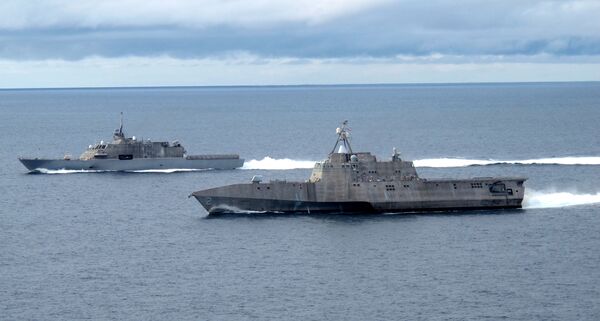
USS Freedom and USS Independence were both decommissioned in 2021. (US Navy)
As the US Navy (USN) assesses some of the first overall fleet operations – and recreates operational concepts – for its littoral combat ships (LCSs), the service appears to be just as determined to quickly reduce LCS numbers as it was to introduce and augment the LCS force decades ago.
LCSs were initially designed decades ago and built to conduct antisubmarine warfare (ASW), surface warfare (SuW), and mine countermeasure (MCM) missions with fast, lightly armed, and relatively inexpensive hulls that would last about a quarter of a century.
However, first-of-class USS Freedom (LCS 1) was decommissioned in September 2021. USS Independence (LCS 2) was decommissioned in July 2021. Both had served the fleet for just over a decade.
Even as the USN was decommissioning its first LCSs, the service was tasking others with different missions, introducing them to fleets in major theatres that faced more competitive threats than when LCSs were first conceived.
USS Sioux City (LCS 11) conducted counter-narcotics operations in the Caribbean Sea, for example, seizing 1,100 kg of cocaine between April and October 2021.
In May 2022 Sioux City joined the US 5th Fleet region – the first time an LCS was deployed to the Middle East – operating in the Red Sea in support of a newly established multinational task force, Combined Task Force (CTF) 153, which focuses on maritime security and partner capacity building in Bab al-Mandeb, the Gulf of Aden, and the Red Sea.
TheNaval Surface Force is taking advantage of LCSs' payload and unmanned system deployment capability, according to Vice Admiral Roy Kitchener, US Naval Surface Force commander.
Looking to read the full article?
Gain unlimited access to Janes news and more...







